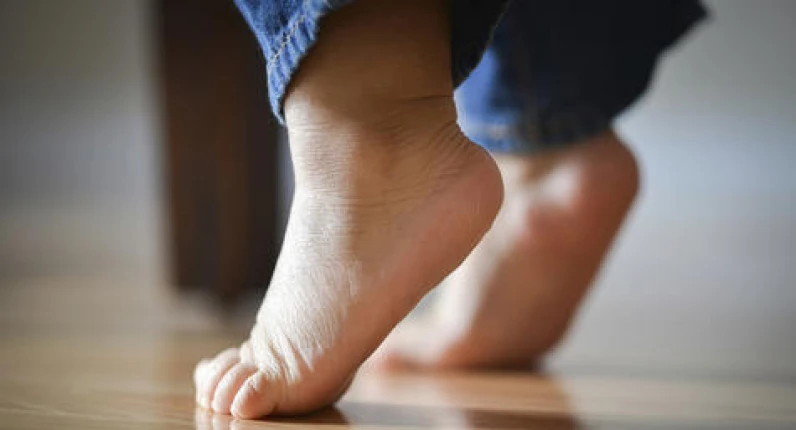
Idiopathic Toe Walking
 Most children occasionally toe walk when their bare feet are on a cold floor, or when they are first learning to walk and cruising along furniture. While some children may walk on their toes for fun when role playing, if your child is older than three years old and consistently walking on his/her toes then a pediatrician and/or an orthopedist should evaluate the child. At this point your child may also benefit from skilled pediatric physical therapy.
Most children occasionally toe walk when their bare feet are on a cold floor, or when they are first learning to walk and cruising along furniture. While some children may walk on their toes for fun when role playing, if your child is older than three years old and consistently walking on his/her toes then a pediatrician and/or an orthopedist should evaluate the child. At this point your child may also benefit from skilled pediatric physical therapy.
What Causes Toe Walking?
Toe walking has a spectrum of different etiologies. At the end of this spectrum is a condition called idiopathic, or habitual, toe walking. Although the cause of idiopathic toe walking is unknown, diagnosing it can be made after evaluating the child to rule out any underlying neuromuscular or orthopedic conditions. Idiopathic toe walking first appears in the toddler phase, as walking begins. Often, the child can walk flatfooted when prompted, but proves toe walking to be their preferred position when the child is unaware they are being observed.
A child with idiopathic toe walking may walk on his or her toes due to hyper or hyposensitivity. The feeling of different surfaces on their bare feet may cause them to rise up on their toes in order to decrease the amount of that surface’s contact with their foot. In this case, you may notice your child dislikes tight clothing, stepping in the sand and/or the grass. It may also cause a dislike in certain textured foods, as well as an adverse to vestibular input such as swinging, jumping, etc. Many times idiopathic toe walking is associated with language delays and with certain forms of autism. For this reason, it is important to make sure that your child is not having any delays with communication or social skills. In this case, a developmental assessment may be appropriate.
What is the Treatment for Idiopathic Toe Walking?
The habit of toe walking can result in loss of range of motion in the ankle and ultimately lead to a shortened Achilles tendon. This may need further intervention such as daytime and nighttime bracing. Bracing would include a removable ankle foot orthoses (AFO), which is a lightweight plastic brace that goes up the back of the calf. This brace maintains the foot at a 90 degree angle. In more extreme cases, serial casting and/or surgery to lengthen the Achilles tendon may be appropriate. Like any habit, the longer you continue to do it, the harder it can be to break. For this reason, having your child evaluated and started into a physical therapy program should be done as soon as possible.
In physical therapy, your child will be started on a stretching and strengthening program. Gait training, balance, and postural exercises will also be included and a sensory integration program may be started if necessary. The physical therapist may also use neuromuscular electrical stimulation which gives the child sensory feedback of when to use the appropriate leg muscles. This will allow for a more normal heel-toe gait pattern. A home exercise program including exercises and activities will be provided in order to further decrease toe walking outside the clinic.
General Physical Therapy Activities for Toe Walkers:
Abdominal and trunk strengthening:
- Sit-ups while holding onto feet
- Sitting on a compliant surface without a back rest when watching TV
Proprioceptive and balance activities:
- Start off by placing 10 marbles and a little bucket/container on the floor. While standing, pick up one marble with your toes and drop the marble into container on the floor. Continue to do this until all 10 marbles in the container, and repeat using the opposite foot.
- Have child stand on a pillow to do activities at the table, such as playing a board game, cards, puzzles, etc.
- Heel walking around the house
- Walking on curbs without falling off
Stretching exercises:
- Stand on bottom step holding onto the railing. Move one foot back so that your heel is off the edge of the step. Using your body weight, press heel down towards the floor. You should feel a stretch in your calf. Hold stretch for 30 seconds and switch feet.